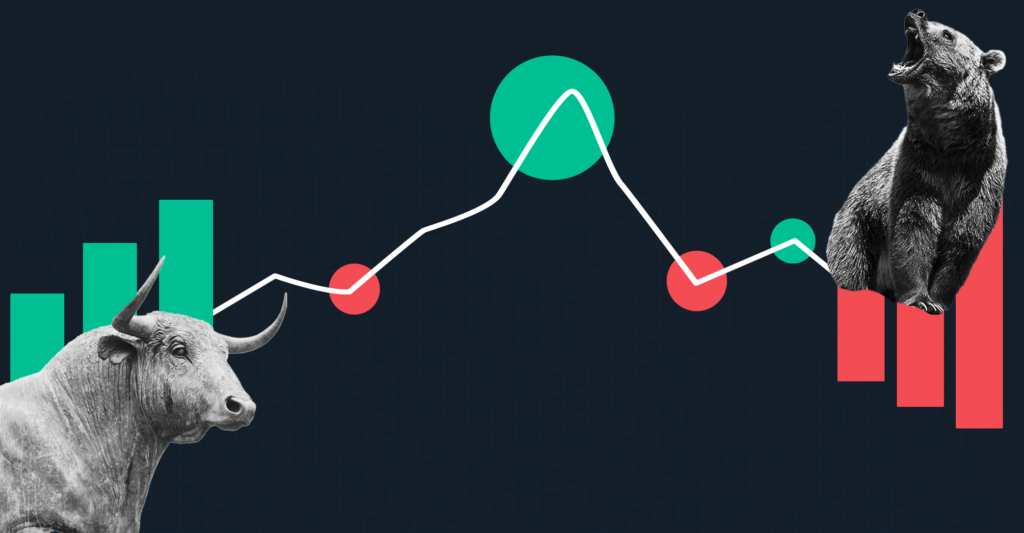Last Updated on May 24, 2022 by Aradhana Gotur
Stock trading or share trading is quite popular among investors with a risk appetite. It aids in wealth creation and also facilitates liquidity. While many investors understand the basics of stock trading and how it works, those who are just starting their journey find the avenue a wee bit confusing. So, let’s go back to the basics and look at what share market trading is all about and its types.
Table of Contents
What is share market trading?
Share market trading is an activity of buying and selling shares or stocks that are listed on recognised stock exchanges. As a trader, you can buy shares from the stock market and you can also sell the shares that you own any time during the market session to book a profit or cut your losses.
Trading in India primarily consists of trading in shares listed on two major exchanges – the Bombay Stock Exchange (BSE) and the National Stock Exchange (NSE). Though there are other exchanges as well, 7 to be precise, these two are the main ones where most of the action takes place.
How does share trading work?
When companies issue stocks, interested investors subscribe to such stocks. After the stock is allotted, the company gets listed on the stock exchange, where the stock price moves according to demand and supply. If there are interested buyers of the stock and the supply is limited, the demand increases, which pushes up the market price of the stock. On the other hand, if investors look to sell stocks and there is limited demand, the supply increases, which pushes the price down. This demand and supply is dynamic and changing constantly. As such, the stock prices continuously move up and down.
In India, the stock market opens at 9:15 am and closes at 3:30 pm. Trading activities are allowed within this window. The market works from Monday to Friday and also has specific holidays.
Types of share trading
When it comes to share market trading, there are different types of trading that you can engage in. Some of the most common ones include the following:
Intraday trading
Intraday trading means buying and selling stocks within the same trading day. So, if you buy a stock after the market opens at 9:15 am and then sell off the stock before the market closes at 3:30 pm, it is called an intraday trade. Intraday trading involves a considerable amount of risk as you try and buy the stock at a low price and hope to sell it off on the same day when the price increases to make a gain. The market may fall too. Intraday trading is for proactive traders who monitor the market movements by the minute intending to make profits as soon as prices change.
Delivery trading
Delivery trading is for long-term investors who follow the buy and hold strategy. Under delivery trading, you buy a stock and then hold it for some time before selling. The holding period can be days, weeks, months, or even years depending on your strategy. This type of trading is less risky than intraday trading because it allows you to wait for stock prices to rise before you sell so that you can earn a profit.
Swing trading
Swing trading is like delivery trading, but with a lower time horizon. Under this type of trading, you buy and hold stocks for a limited period, usually 5-7 days, because you expect the market to be in a particular trend or the stock price to move to a particular level in the short term. Swing trading is done to earn profits from the short-term price movement of stocks.
The main difference between Delivery trading and Swing trading is the time period. The former is for long-term investors while the latter is for investors with a lower time horizon. Click To TweetShort selling
Short selling is a different type of trading strategy wherein you sell stocks that you don’t own. You borrow stocks from the market and sell them when you expect the prices to fall. Then, after the prices have fallen, you buy back the stock at a lower rate, thereby making a profit on the trade.
For example, say a stock is trading at Rs 50 and you expect the price to fall to Rs 40. You, therefore, first place a sell order for 1000 units, earning Rs 50,000. Thereafter, let’s say the stock price falls to Rs 42 and you buy back 1000 units paying Rs 42,000. So, in this trade, you make a profit of Rs 8000. Under this type of trading, you have to square-off your positions within the same trading day. Short selling is also very risky as the prices might move in the opposite direction than what you predict.
How to do share trading?
Trading in India has gone digital. You can buy and sell shares and other listed securities online through your computer or smartphone. To engage in share trading, however, you would need to enlist with a broker. Thereafter, you need a demat account, trading account and a savings account, all linked together to start your trading journey.
Things to keep in mind when trading
Trading in equities requires you to be vigilant. Here are a few things that you should keep in mind before you engage in trading in India:
- Share trading is a risky affair. The market can be quite volatile and so, you need to have a healthy risk appetite before you begin trading.
- Try and invest with a long-term horizon to maximize your profits.
- Be patient when the market tumbles. Do not panic and sell off your holdings. The market would eventually stabilise and help you earn returns on your investments over the longer term.
- Diversify your portfolio with stocks from different segments to minimise risks.
- Review your holdings regularly, and also study the market to know when to enter and when to exit the market.
Share trading can be profitable but know the risks involved. Understand how to do share trading and the different aspects of the market. Also, choose your investment strategy and trading style and then build up a diversified portfolio. Learn the technical aspects of your trading journey and monitor your investments to watch your portfolio grow with time.
- How To Declare Mutual Funds in ITR & Disclose Capital Gains in India? - Jun 6, 2025
- How To Sell or Exit Your Mutual Funds in India? - Jun 6, 2025
- Fund of Funds (FOF): Meaning, Types & Advantages - May 13, 2025





